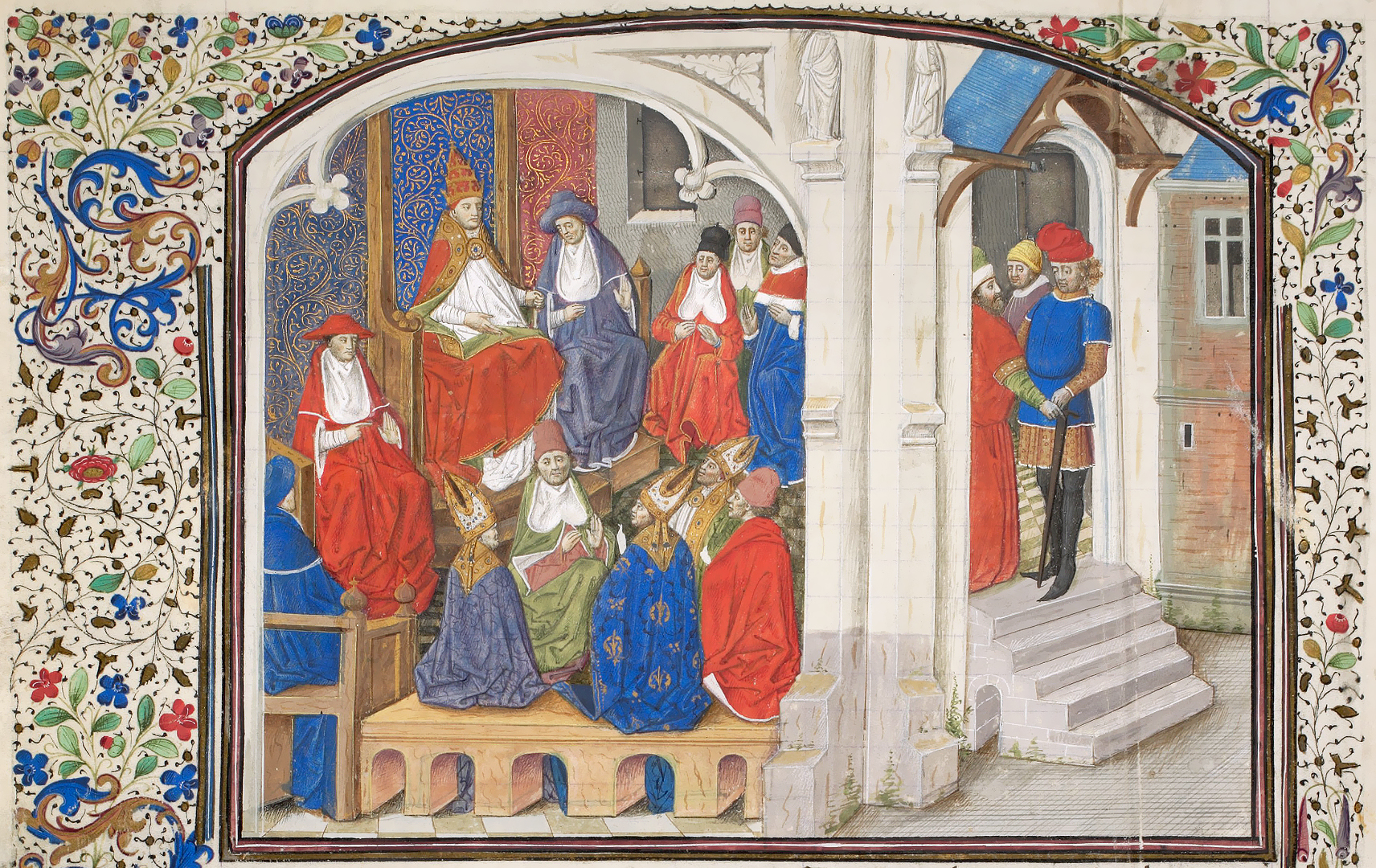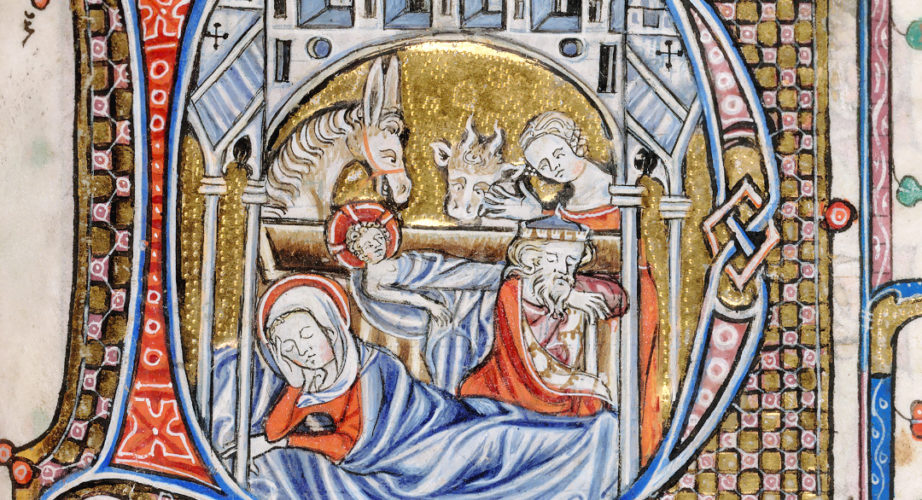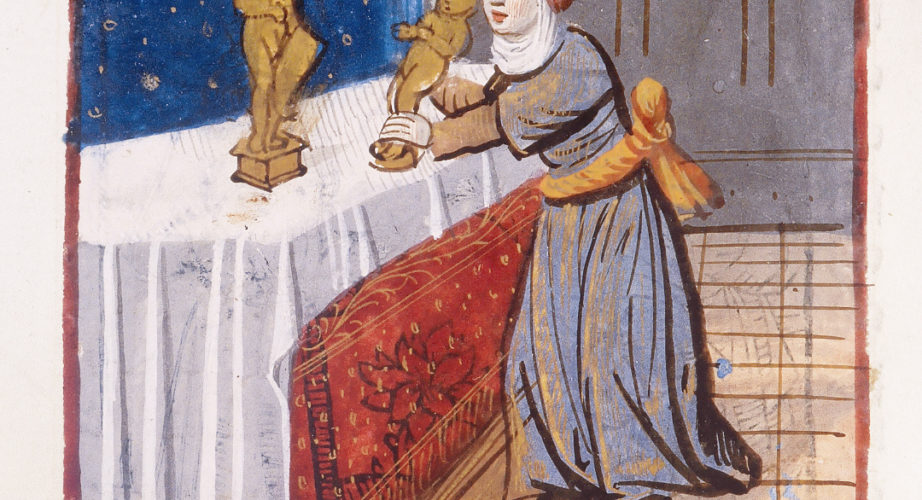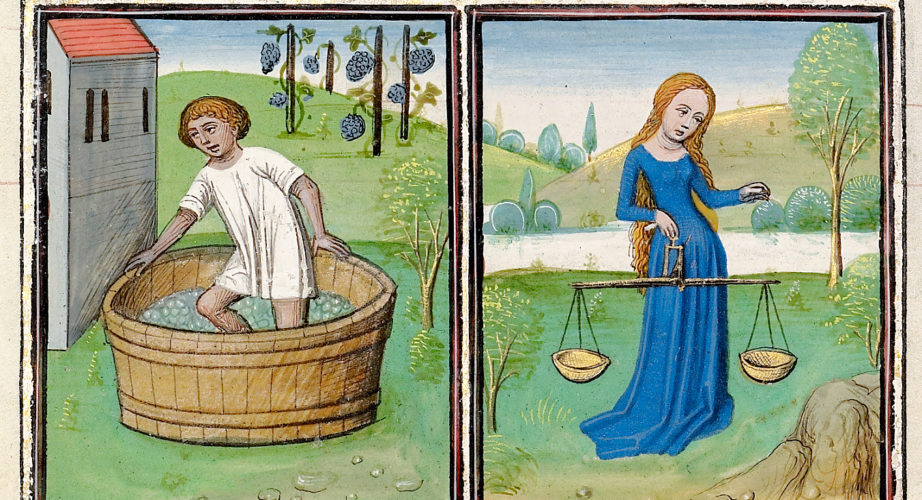POPE URBAN II
 On March 12, 1088, Pope Urban II was elected by acclamation at a small council in Terracina.
Urban, born Eudes around 1042, was from a noble family living near Châtillon-sur-Marne. As a boy, Eudes studied in Reims, where he later became archdeacon, before being elected prior of the abbey of Cluny. Being one of the most active supporters of Pope Gregory VII's reforms, Eudes was named cardinal-bishop of Ostia around 1080 and, in 1084, pontifical legate in the Holy Roman Empire. At the death of Gregory, one year later, Eudes' name was among the four most papable successors; however, Desiderius, the abbot of Monte Cassino, was chosen instead. After his short reign under the name of Victor III, the new Pope died and Eudes, now officially Urban II, was elected to take his place.
Rome, however, was at the time being ruled by the Antipope Clemens III, whom the Holy Roman Emperor Henry IV had put in power after his repeated clashes with Gregory VII; it was only after more than one full year, on July 3, 1089, that Urban could finally enter Rome - Clemens having fled to Tivoli.
As Pope, one of Urban's main actions was to approve of the First Crusade. The Byzantine Emperor Alexios I Komnenos had, in fact, asked the Pope for help against the Seljuk Muslims who had taken over most of Anatolia. In 1095, during the Council of Clermont, Urban II made a speech urging nobles and commoners alike to head to Jerusalem in pilgrimage, fighting Muslims and taking back the Holy Lands while on the way. Met with great enthusiasm from the masses, the First Crusade ended in 1099 with the Siege of Jerusalem.
"Council of Clermont presided by Urban II", illumination from the manuscript "Histoire des Croisades traduite en français" by Guillaume de Tyr, ms. fr. 85, f. 12v, around 1460-1465, Bibliothèque de Genève, Geneva.
On March 12, 1088, Pope Urban II was elected by acclamation at a small council in Terracina.
Urban, born Eudes around 1042, was from a noble family living near Châtillon-sur-Marne. As a boy, Eudes studied in Reims, where he later became archdeacon, before being elected prior of the abbey of Cluny. Being one of the most active supporters of Pope Gregory VII's reforms, Eudes was named cardinal-bishop of Ostia around 1080 and, in 1084, pontifical legate in the Holy Roman Empire. At the death of Gregory, one year later, Eudes' name was among the four most papable successors; however, Desiderius, the abbot of Monte Cassino, was chosen instead. After his short reign under the name of Victor III, the new Pope died and Eudes, now officially Urban II, was elected to take his place.
Rome, however, was at the time being ruled by the Antipope Clemens III, whom the Holy Roman Emperor Henry IV had put in power after his repeated clashes with Gregory VII; it was only after more than one full year, on July 3, 1089, that Urban could finally enter Rome - Clemens having fled to Tivoli.
As Pope, one of Urban's main actions was to approve of the First Crusade. The Byzantine Emperor Alexios I Komnenos had, in fact, asked the Pope for help against the Seljuk Muslims who had taken over most of Anatolia. In 1095, during the Council of Clermont, Urban II made a speech urging nobles and commoners alike to head to Jerusalem in pilgrimage, fighting Muslims and taking back the Holy Lands while on the way. Met with great enthusiasm from the masses, the First Crusade ended in 1099 with the Siege of Jerusalem.
"Council of Clermont presided by Urban II", illumination from the manuscript "Histoire des Croisades traduite en français" by Guillaume de Tyr, ms. fr. 85, f. 12v, around 1460-1465, Bibliothèque de Genève, Geneva.
Post consigliati
Happy Holidays from Folia Magazine!
Two sleepy parents and a very awake Child... in a way, this Nativity…
Rachel
On September 30, the Church celebrates the feast day of St. Rachel, Jacob's…
Autumn
Da oggi (precisamente alle 8.50 italiane!), con l'ingresso del Sole nella costellazione della…


